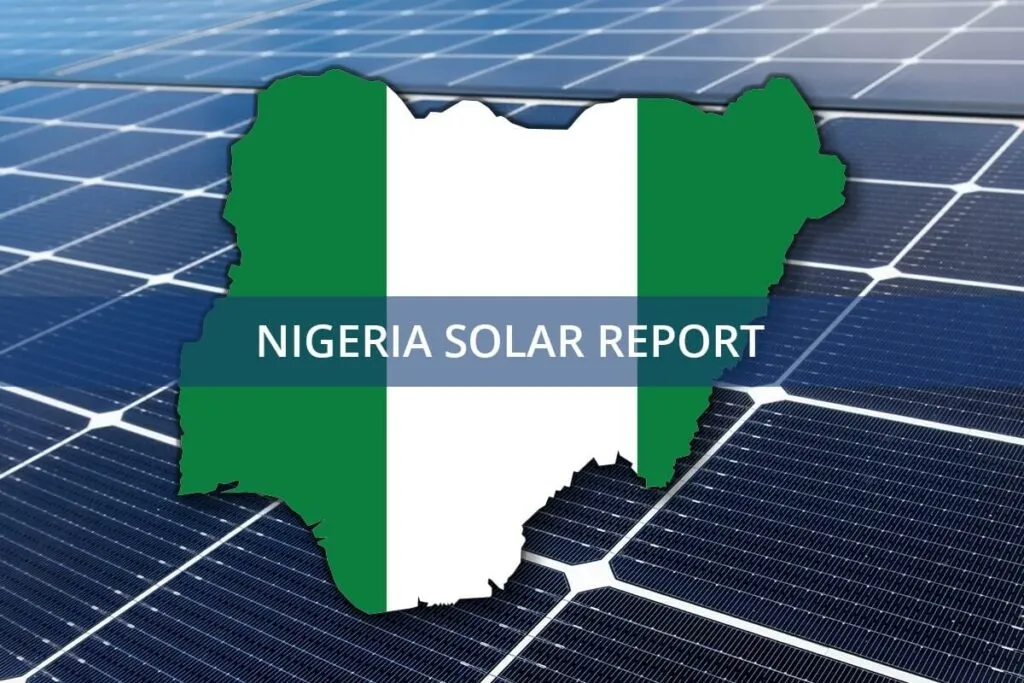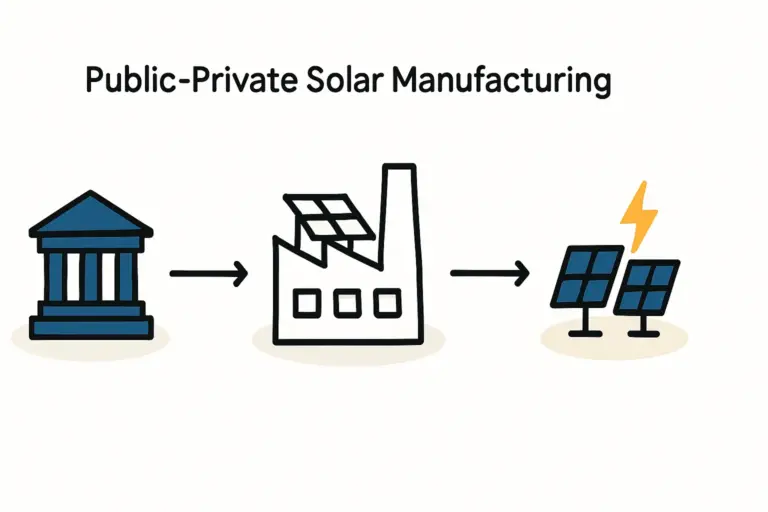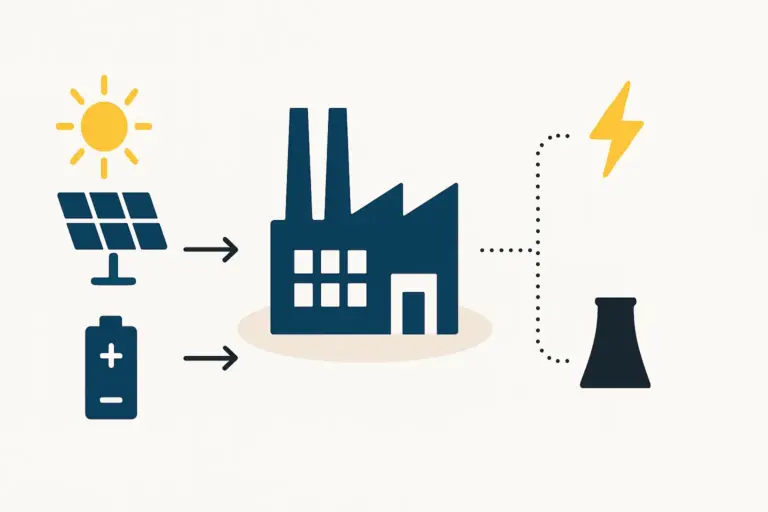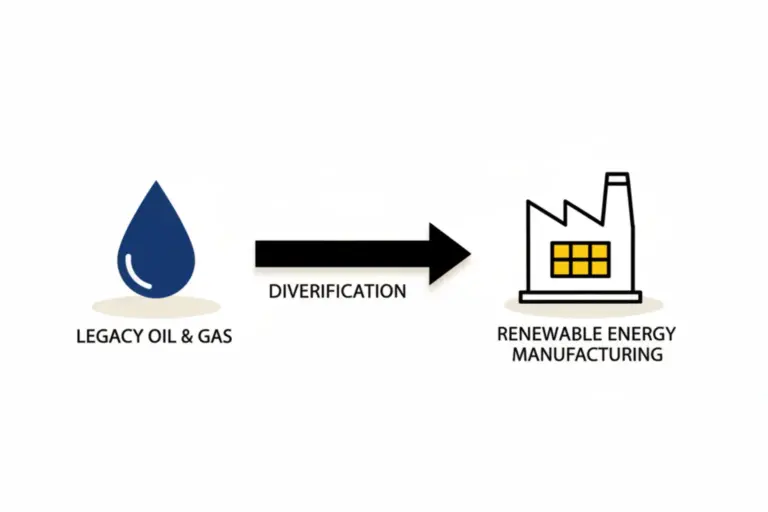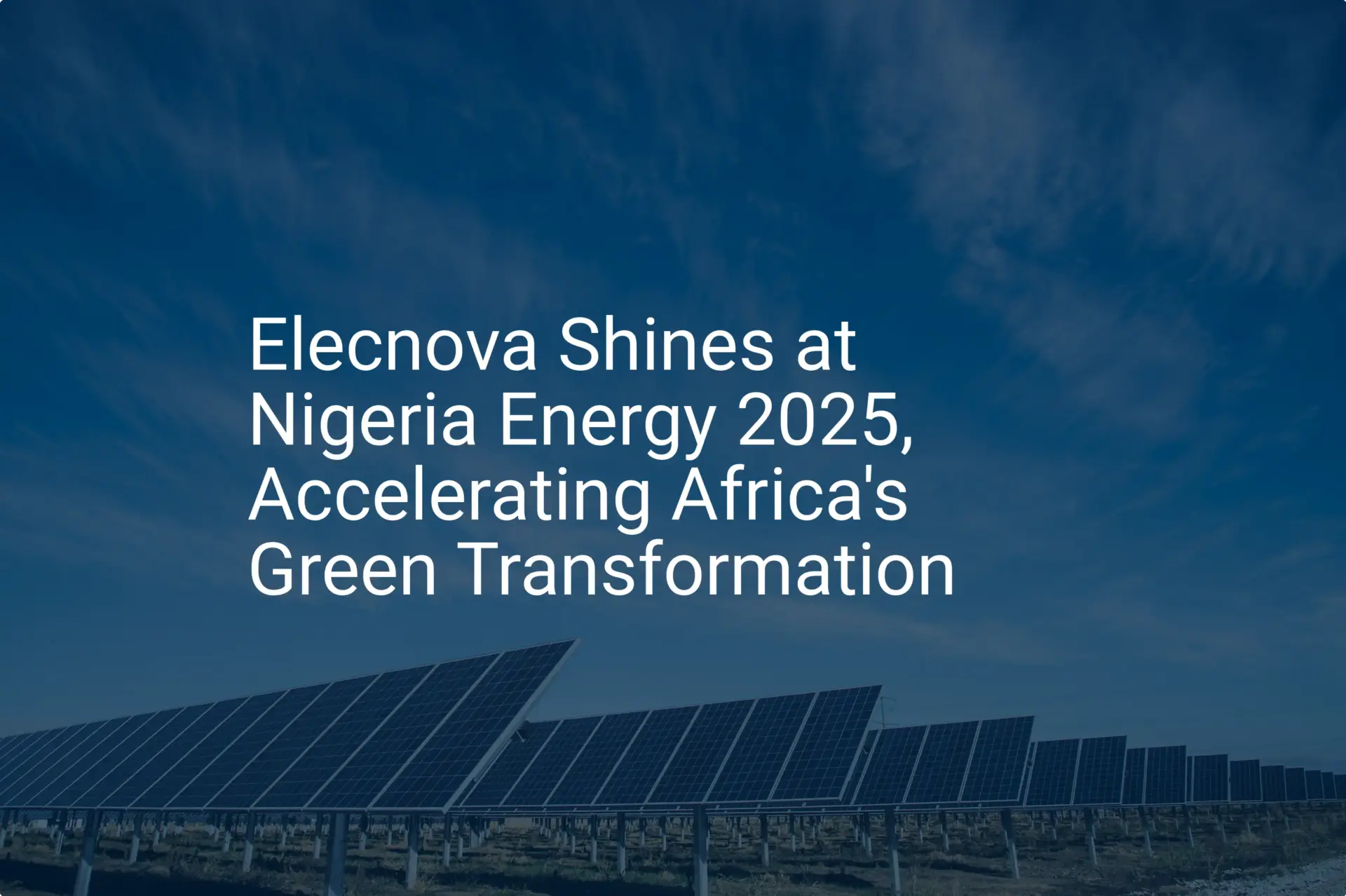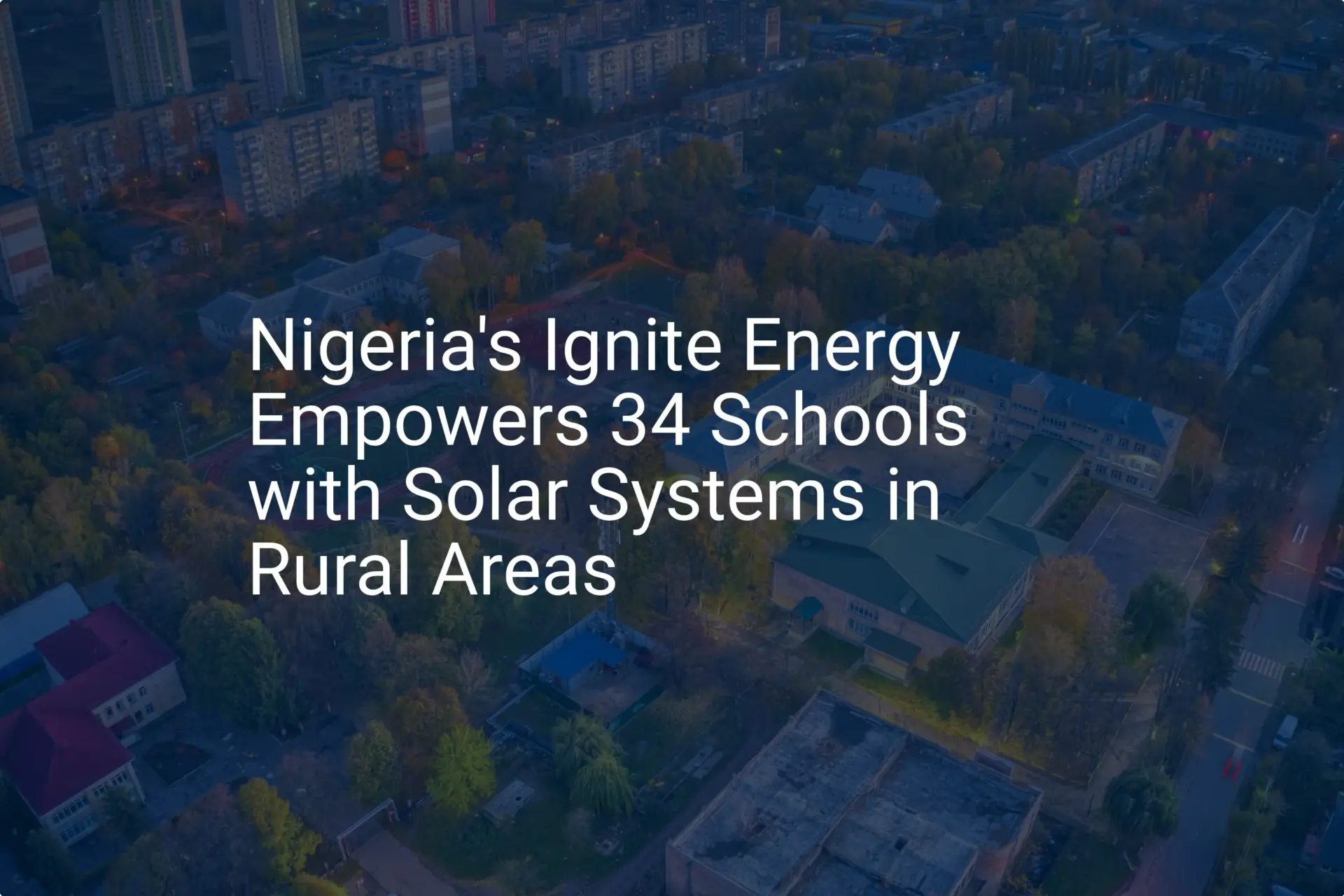Many promising industrial projects fail not because of a flawed vision, but because of a flawed spreadsheet. An investor might download a standard financial model for a solar module factory, plug in machine costs from a European or Asian supplier, and project a healthy profit.
Yet, when applied to the Nigerian market, this model quickly becomes a work of fiction. The single largest oversight is underestimating the profound impact of local operating conditions.
A financial model is more than a document for securing funding; it is the strategic blueprint for a sustainable business. For an entrepreneur entering Nigeria’s solar manufacturing sector, creating a model grounded in local reality is the most critical first step. This guide outlines the specific Nigerian cost inputs and revenue considerations essential for an accurate and reliable investment projection.
Why a Generic Financial Model Fails in the Nigerian Context
Using a generic financial template for a Nigerian solar factory is like trying to navigate the streets of Lagos with a map of Berlin. While the fundamental components are the same—roads, buildings, landmarks—the context, traffic, and on-the-ground reality are entirely different. A successful financial projection must reflect the unique economic and infrastructural landscape of Nigeria.
Key areas where generic models fall short include:
-
Energy Costs: Assuming stable, low-cost grid power is a frequent and costly mistake.
-
Logistics & Supply Chain: Failing to budget for port delays, customs complexities, and inland transport challenges.
-
Labor & Skills: Miscalculating the costs associated with training and retaining a skilled technical workforce.
-
Capital Expenditures: Overlooking essential site infrastructure required to ensure smooth operations.
Building Your Model: Key Nigerian Cost Inputs
A robust financial model is built from the ground up, with each assumption validated against local data. The following sections detail the critical cost centers that require a specific Nigerian focus.
1. Capital Expenditures (CapEx): Beyond the Machine List
While the core investment in a turnkey solar production line is a significant figure, it represents only part of the total CapEx. In Nigeria, the supporting infrastructure is just as critical and requires explicit budgeting.
-
Power Infrastructure: Due to the unreliability of the national grid, a factory cannot operate without a dependable backup power system. This requires budgeting for high-capacity diesel generators (e.g., 1-2 MVA), fuel storage tanks, and automated switchgear. This can add 15-25% to the initial machinery investment.
-
Water Supply: A consistent supply of clean water is essential for module washing and other processes, often requiring investment in an industrial borehole, water treatment plant, and storage facilities.
-
Site Development: Land acquisition costs vary dramatically depending on the location (e.g., a free trade zone versus a rural area). Beyond the purchase price, the budget must also cover substantial costs for civil works, including drainage systems to manage seasonal flooding, perimeter fencing, and security infrastructure.
2. Operational Expenditures (OpEx): The Local Reality
Monthly running costs are where a financial model’s accuracy is truly tested. In Nigeria, these can differ significantly from international benchmarks.
Energy Costs
This is arguably the most critical OpEx variable. A factory’s production cost per module is directly tied to its cost of energy.
-
Grid vs. Self-Generation: While grid electricity is cheaper (averaging ₦60-70 per kWh for industrial users), its availability is often sporadic. The factory will likely run on diesel generators for a significant portion of its operating hours.
-
Diesel Costs: The cost of diesel-generated power can be three to four times higher than the grid tariff, often exceeding ₦250 per kWh when generator maintenance and fuel price volatility are factored in. A realistic model must therefore assume a blended energy cost based on a conservative estimate of grid uptime (e.g., 40-50%).
Logistics and Supply Chain
Importing raw materials like solar cells, glass, and EVA foil is a core operational activity.
-
Port and Customs: Budgeting for shipping alone is insufficient. Significant costs are incurred at Nigerian ports, including terminal handling charges, customs duties, and potential demurrage fees due to administrative delays. Entrepreneurs who have established factories in the region often report that these ‘soft costs’ of importation can add 10-20% to the landed cost of materials.
-
Inland Transport: The cost and time for moving containers from the port to the factory site must also be factored in, accounting for poor road conditions and the potential need for security escorts.
Labor Costs
While unskilled labor wages are relatively low, the availability of experienced solar technicians and engineers is limited.
-
Training Investment: A substantial budget for training is essential. Based on experience from J.v.G. turnkey projects, this often involves sending key personnel abroad for intensive training or bringing in expatriate specialists for the first 6-12 months of operation. This training budget is a vital OpEx that ensures quality and efficiency.
-
Skilled Labor Premium: To retain trained staff, salaries need to be competitive, often exceeding the market average for general manufacturing roles.
Projecting Revenue: Market-Specific Considerations
Accurate revenue forecasting depends on a deep understanding of the Nigerian solar market’s unique drivers and pricing dynamics.
Pricing Strategy
The price point of a locally produced solar module is shaped by a unique set of advantages and disadvantages.
-
Competition: The primary competition comes from imported modules from Asia. A local manufacturer may not always compete on upfront price but can offer significant value through immediate availability, local warranty support, and elimination of international shipping complexities for the buyer.
-
Value Proposition: The ‘Made in Nigeria’ label can be a powerful sales tool, particularly for government-funded projects or commercial clients who prioritize local content and supply chain security. This can justify a modest price premium.
Off-take Agreements and Sales Channels
Revenue projections should be conservative and, where possible, backed by letters of intent or memoranda of understanding (MOUs) from potential buyers.
-
Target Market: The commercial and industrial (C&I) sector represents a primary market, as businesses actively seek to reduce their reliance on expensive diesel power.
-
Distribution: Building a network of trusted solar installers and distributors is key to reaching the fragmented residential and small commercial market.
Assembling the Financial Model: A Practical Example
Once these localized inputs are gathered, they can be built into a standard financial statement model.
-
Assumptions Tab: This is the most important sheet. It should clearly list all key assumptions: cost of diesel per liter, assumed grid uptime percentage, import duty rates, and projected sales volume.
-
Statements: The model should generate a 5-year projection for the Profit & Loss Statement, Cash Flow Statement, and Balance Sheet.
-
Analysis: Key outputs to analyze include the project’s Internal Rate of Return (IRR), Net Present Value (NPV), and payback period. A common challenge for new ventures is underestimating the working capital needed to fund the first 6-9 months of raw material inventory, especially given long lead times for imports. For a 50 MW facility, this can require an additional $500,000 to $1 million compared to a European setup.

Frequently Asked Questions (FAQ)
What is a realistic payback period for a solar factory in Nigeria?
The payback period is highly dependent on operational efficiency, sales volume, and the local regulatory environment. A well-managed facility with strong off-take agreements can achieve a payback period of 5-8 years. This is generally longer than in markets with more stable infrastructure and lower operating costs.
Are there government incentives for local solar manufacturing in Nigeria?
The Nigerian government has historically offered incentives for ‘pioneer status’ industries, which can include tax holidays and favorable import duty structures on equipment. However, policies can change. Thorough due diligence with the Nigerian Investment Promotion Commission (NIPC) and other relevant authorities is therefore essential.
How much should I budget for a professional feasibility study?
A detailed feasibility study is a critical preliminary step before committing to major investment. For a project of this scale, a professionally prepared study, including market analysis and a preliminary financial model, can range from $25,000 to $75,000, depending on its depth. This investment is crucial for mitigating risk.
Is it better to start with a fully automated or a semi-automated production line?
For new entrants in markets like Nigeria, a semi-automated line often presents a better balance of investment, flexibility, and labor utilization. It reduces the initial CapEx and is less sensitive to power fluctuations. Further details on equipment options can be found by exploring the solar module manufacturing process.

Conclusion: From Projection to Profitable Reality
A profitable solar module factory in Nigeria is entirely achievable, but it cannot be built on generic assumptions. Success begins with a financial model meticulously tailored to the local context—one that honestly accounts for unreliable power, logistical hurdles, and the investment needed to build a skilled team.
By replacing optimistic guesses with data-driven local inputs, an entrepreneur transforms a simple spreadsheet into a powerful strategic tool. This realistic approach provides the foundation for navigating the challenges and seizing the immense opportunities within Nigeria’s growing solar market. Building such a detailed plan requires a combination of financial expertise and deep industry knowledge. Educational platforms like pvknowhow.com can provide the structured guidance needed to help new market entrants bridge this gap.


